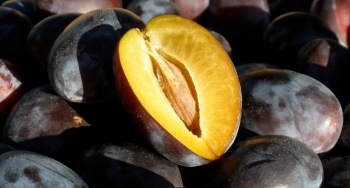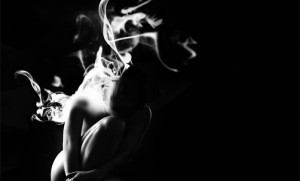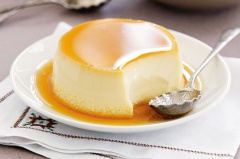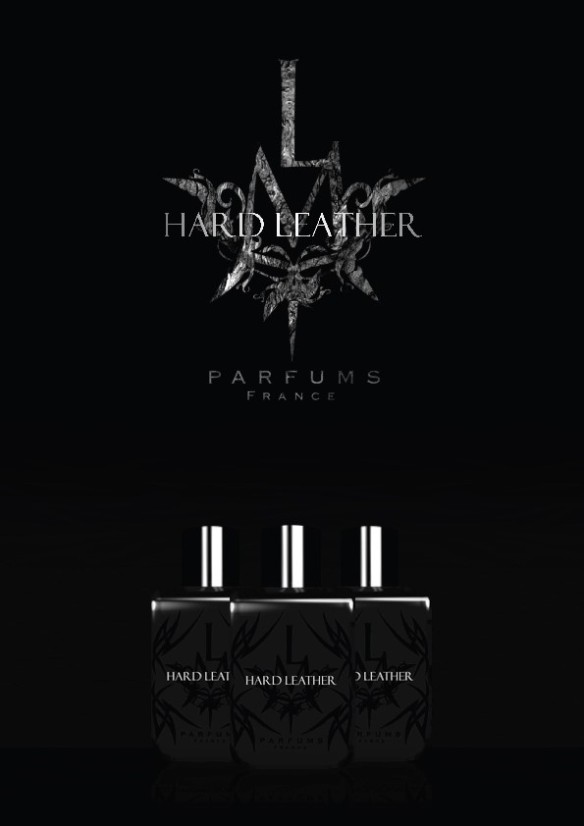Honeyed oud, plummy fruits, the smoky smell of burnt leaves and singed wood interwoven with delicate florals, vanilla, and white creaminess, all combined in a mix that resembles some other well-known fragrances on the market before turning into its own creature — that’s the essence of Bois d’Oud, a fragrance from Perris Monte Carlo.
Perris Monte Carlo is a relatively new house that emerged in 2012. I’ve been curious about it for a while as it is based in my old home, so I obtained two samples of the line. The majority of the fragrances, including Bois d’Oud, were launched in 2012 in Europe, before later being released in the U.S. in 2013. I can’t find a company website to see how Perris would describe Bois d’Oud, only a lot of PR babble about how the company’s signature involves luxury, gold, and prestigiousness. It all sounds terribly nouveau riche and obnoxious, so let’s get directly to the perfume’s notes.
According to First in Fragrance, Bois d’Oud’s ingredients are:
Top Note: Bergamot
Heart Note: Peach, Plum, Jasmine, Iris, Rose, Orange Blossom
Base Note: Cedarwood, Agarwood (Oud), Patchouly, Vanilla, Ambergris, Labdanum (Rockrose), Musk

Honey and plums. Photo: Alice Carrier at Bread and Honey blogspot. (Website link embedded within photo.)
Bois d’Oud opens on my skin with the richness of honey-drenched oud, followed by plums, a patchouli rose, smokiness, and a toffee’d, dirty, labdanum amber. There are subtle strains of orange blossom, and, indeed, a light flicker of orange itself. The overall effect is of a multi-faceted, dark sweetness that is dominated by plummy fruit, oud, and honey.
Bois d’Oud’s opening immediately and instantly calls to mind Arabian Oud‘s Kalemat. The Perris fragrance is slightly different with more plums, a stronger oud presence, and the inclusion of orange blossoms in lieu of blueberries. It is also thinner, sheerer, and less opaque in feel than Kalemat’s opening. For a brief moment, Bois d’Oud also reminds me of an oud version of Serge Lutens‘ Fille en Aiguilles, though there are even more differences with this one. Bois d’Oud is less plummy than that one, lacks the heavy frankincense element, has honey instead of brown sugar sap, includes a very noticeable strain of jammy rose, and its smokiness seems to stem from different sources. Throughout Bois d’Oud’s development, I kept feeling like I was smelling something akin to guaiac wood, with its aroma of burning leaves in a fall bonfire, as well as its occasional facet of stale dustiness. That’s all very different than Fille en Aiguilles. Ultimately, perhaps the combination of honeyed sweetness, slightly dirty ambered labdanum, oud and darkly plummy fruits is closer to a third fragrance that came to mind during Bois d’Oud’s development: Nasomatto‘s Black Afgano. Bois d’Oud opens like a mix of Kalemat and Black Afgano, before eventually moving closer to the latter.
10 minutes into its development, the notes in Bois d’Oud realign themselves. The plum takes a small step back, while the peach, orange blossom, and jammy patchouli rose step more to the foreground. The orange blossom adds a subtle (very subtle) soapy undertone to the fragrance, though it’s fleeting. The peach adds a different sort of fruitness, but it is the patchouli which is most prominent. It’s a purple fruitchouli that is thoroughly intertwined with the rose, but it doesn’t feel like dark molasses so much as syrup. Very sweet syrup that underscores the strong impression of honey. The oud, fruit and floral accords are quite drenched with both elements, creating the impression of stickiness, though the perfume is very airy in weight.
The whole bouquet is nestled in a cocoon of abstract woods and a subtle tinge of smokiness. As noted above, I keep feeling as though there should be guaiac wood listed in the notes, because something in Bois d’Oud replicates its particular form of singed dryness. It goes beyond the smell of mere cedar, though both woods can have a dusty, stale undertone like the one that appears later on in Bois d’Oud. In truth, I really don’t smell cedar in the way that I’m used to, and all the wood notes beyond the oud feel really indistinct in an individual manner. As for the oud, it is not medicinal, fecal, raw, or butch. It is merely honeyed, and a little bit musky.

Photo: TheCozyApron.com. (For a recipe for grilled cinnamon plums with honey and mascarpone vanilla, click on the photo. Website link is embedded within.)
Bois d’Oud continues to shift. About 20 minutes in, the vanilla emerges in the base, along with what I can only describe as a white creaminess. It’s doesn’t feel like it comes wholly from the vanilla, though that does seep over into it. I can only describe it as something that is almost like white, honeyed beeswax, but not quite. It doesn’t smell waxy or even particularly honeyed, so perhaps it’s not an offshoot of labdanum (which can often take on those nuances), either. Whatever the source, it goes beyond a mere textural thing and is one of my favorite parts of Bois d’Oud, especially when it has that lightly vanillic flavour to it. Interestingly, as the vanilla creaminess grows stronger, the honey note that burst out of the gates grows weaker and thinner.
At the same time, the first glimmer of a dry, woody aromachemical appears. It emphasizes my early impression that the oud note is synthetic, not real. As Andy Tauer once noted in his blog, most purported “oud” fragrances on the market today use hardly any of the increasingly expensive, real ingredient, relying instead on chemical substitutes put into a cypriol base. It smells like that here with Bois d’Oud. At first, it is quite a subtle chemical twinge, thanks to the growing creaminess and soft vanilla that help to cushion the note. Later, though, it becomes a slightly different matter.
As a whole, Bois d’Oud at the end of 30 minutes is a well-blended bouquet of oud, patchouli rose, slightly vanillic creaminess, plum, and labdanum amber with flickers of orange blossoms, smokiness, and an abstract woodiness. Bois d’Oud still feels syrupy, but now it is from the purple fruitchouli more than from the honey. The peach lingers in the sidelines, but it is quite muted. It’s the same story with the cedar, and that subtle smokiness.
Bois d’Oud doesn’t change substantially for the next few hours. It drops in sillage at the start of the 2nd hour, hovering just 2 inches above the skin at best, and its weight feels as though it were cut by 60%. I keep having images of translucent cream tulle, splattered by plummy, purple fruitchouli and roses, then sprayed with a synthetic oud. Something in the base is taking on a faintly medicinal vibe, though it’s not the “pink rubber band-aid” smell that oud can sometimes have. Whatever it is, I’m not a fan. Equally disappointing is how that lovely vanilla and white, cream beeswax note is being increasingly overshadowed by a woody, stale dustiness that probably stems from the cedar.
Bois d’Oud turns into a skin scent about 2.5 hours in, though it easy to detect up close, thanks to the plummy, syrupy patchouli in particular. The honey, peach and orange blossoms have vanished, though the jammy rose lingers. The vanilla seems very muffled, while the aromachemical aspect is not. The focus of the scent is increasingly on oud and dry woods, infused with that creamy note and the subtle touch of abstract, stale dustiness. Bois d’Oud feels now like a Montale fragrance. You can take that how you will.
I’m obviously not enthused about this stage, but I have to say that Bois d’Oud recovers very well, changes again, and has an extremely nice drydown. Near the end of the 4th hour, Bois d’Oud takes on more ambered and earthy nuances. There is suddenly a lot of gritty, dark, golden amber lurking about the edges, creeping closer to the main stage. At the same time, there are undertones of something that smells like dry tobacco. Much more noticeable is a definite animalic muskiness that wafts about as well, adding a dirty earthiness and the tiniest, subtle touch of skankiness.
For the most part, Bois d’Oud is now a soft blend of creamy woods, oud, dirty labdanum amber, dryness, earthiness, and a tinge of animalic muskiness. The bouquet is still infused with roses and a syrupy sweetness, but both are much lighter touches that have been diffused or countered by the new elements. Unfortunately, Bois d’Oud has become very gauzy and thin, and you have to sniff really hard to detect its nuances.
The earthiness and skanky musk slowly fade away, and their place is taken by other elements. There is the faintest trace of soft, sweetened powder that briefly pops up in the base for about 40 minutes. Up to top, there is a subtle stale smokiness that flitters about. It’s not quite the smell of campfire ashes, nor the smell of burning leaves, but subtle parts of both, amidst the stronger smell of singed wood. It’s that guaiac wood impression that I talked about earlier As a whole, Bois d’Oud feels much drier at the end of the 5th hour and the start of the 6th, much more purely focused on its wood notes, though that quiet creaminess still remains.
Bois d’Oud’s notes slowly shift in terms of their prominence and order. For a few hours, the perfume consists of sweet oud, creaminess, amber, and dry woods, upon a base consisting of an aromachemical tinge and plumminess, all lightly flecked by that whisper of singed woods and dustiness. Slowly, though, the creaminess fades away and the amber takes over.
By the end of the 9th hour, Bois d’Oud is a gauzy blur of amber, followed by abstract woodiness and a lingering touch of sweetness. It’s very nice, and has almost a caramel undertone to it, thanks to the labdanum. At times, the syrupy jamminess of the patchouli rears its head, but generally the fragrance is centered on ambered woods in a mix of dryness with sweetness. That is how the perfume remains until its very end, almost 11.5 hours from the start.
On Fragrantica, people seem to really like Bois d’Oud. I was interested to see that the notes the people found most dominant were, in order: oud (22 votes), plum (18), vanilla (16), and patchouli (14). Several people picked up on the creaminess, which they found to be vanillic in nature. Others talk about the plums, sweetness, and, in one case, the peach. One woman compared Bois d’Oud to a Montale fragrance, a brand she says she loves, and wrote, in part:
the scent is quite a stunner. It is very similar to Velvet Aoud from Montale, only richer, sweeter and woodier. There is a plastic kind of aura which reminds me of Iris Ganache from Guerlain.
I cannot smell the bergamote they describe for the top notes. It’s had a syrupy feel, without being too sugary. The sweetness must come from the plum and the peach. I do not smell any flowers of any kind. There is a strong woody, forest-like smell, which isn’t fresh at all… Aoud is the most dominant note, along with dried fruits. Like dried plums and apricots, which have a lot of sweetness and a little saltiness in them. Lots of them! The roses and jasmine, if there, are totally hidden to my nose. Maybe the smallest amount of neroli and iris…. Cedar is listed, but cedar for me is always a “fresh” kind of wood, a little green…. I don’t smell that either… The woods in here are deep and dark. There is also a lot of ambregris which has a vanillary tone, but no distinctive vanilla. I cannot smell much musk or patchouli. No freshness here.
Overall, I would call this a fruity woody, if such a category existed…
Case and point: dried fruits + aoud + dark woods + ambregris. Great silage and longevity, fairly linear, becomes a tad fresher in the base, surprisingly. [Emphasis with bolding added by me.]
Other impressions of Bois d’Oud are:
- one of the best Ouds on the market surpasses all Montale creations IMO, this could be a vintage M7 flanker, enough said!
- The beginning, to me was all about the oud, not very sweet – quite earthy and musk-laden. It reminded me very much of M Micallef’s Oud Gourmet – and I didn’t find it at all fruity. About 5 hours later now, the vanilla has really come out and it feels more creamy. I’m really loving this dry down, but am sorry to not have experienced the plum notes and creaminess earlier on.
- very special frag in a perfume world lately dominated by oud in all his forms ,this a sirupy quite sweet oud maybe one of the most feminine around ,it reminds me a lot of the first original not reformulated poison by dior ..anyway a definitely worth buying frag 7/10 [Emphasis to names with bolding added by me.]
On Basenotes, the very first review at the top of the page almost made snort with its amusing conclusion:
Perris is based in Monaco, the juice made in Italy, and the thrift store bling of the bottles is aimed straight at the Middle Eastern market.
Yes, I think the bottle’s bling definitely approaches the tacky level, and is not representative of Monaco. (I promise you, Monaco is not a vulgar place, at least it wasn’t when I lived there. This newcomer, Perris, seems to be quite a different kettle of fish, though.) The rest of the review from “Gimme Green” is interesting, and seems to reflect my perception of a stale dustiness underlying Bois d’Oud:
Dry, dark, dusty wood with touches of sweetish suede and hints of dry fruit. Faded rose petals crumble about it. Lived in and somewhat musty.
Has a shut in feel, so claustrophobics beware.
The oud is of a recognizable sort (something similar is in Dueto’s City Love) and I imagine this is one synthetic we’ll come across more and more.
It’s modest, un-fresh and a satisfying wear, if not exactly breaking new ground. An oud one can don and not be distracted by. Plumps out and opens up surprisingly in the deep drydown.
One commentator, “Darvant,” also detected a suede tonality, along with an incense-y rubberiness and a strong floral element that included the jasmine. He writes, in part:
So luxurious, stormy, spicy/fruity and intoxicating in its first explosion but in a while so silky, slightly powdery, delicately rubbery (almost as a golden musky/resinous suede). […] a tornado of diverse elements by soon interacting each other in an armonic olfactory orchestra as luxurious hesperides, mellow plummy/orangy fruits, sambac jasmine, exotic sweet spices and powdery iris (the latter in its heady and mastering role). By soon the spicy/fruity drama is encompassed and comforted by a soothing accord of mossy galbanum, smooth balsams, animalic resins and probably rubbery/incensey suede. The influencing iris provides hints of floral powder perfectly integrated with musks, star anise and suede. A touch of olibanum or just powdery iris, woodsy resins and velvety suede? Probably it’s the note of agarwood (as linked with iris and star anise) which provides a sort of suede/rubber (vaguely boots polish type of) boise vibe around. The sambac jasmine affords an incredibly glamour “icy” spark in the air, as well as combined with musky amber, anise, talky iris and may be aldehydes. Actually in conclusion a velvety rubbery suede type of vibe emerges from the storm with all its exotic silkiness. A dark patchouli provides structure and stableness for all the general oriental mélange.
PS. In the dry down the vanilla emerges and tames a bit the agarwood spicy “gassiness”. The agarwood resin smells slightly synthetic and some people can demur it but i add that this element does not understate the extreme sophistication of the olfactory performance and can’t veil in any way the beauty of its glamour modernity.
In sharp contrast to all those layers, a third Basenotes poster wrote that he or she detected nothing more than “dry woods… [b]ut it’s such a nice smell, that it’s more than enough. Not groundbreaking though.”
I agree with that last statement. Bois d’Oud is not a revolutionary or unusual scent, as all the perfume comparisons from me and various forum commentators should make clear, but it’s not identical like the others either. It is not as dark, dry or smoky as Black Afgano; it seems smoother, plummier, more gourmand at times, and sheerer. Despite the initial resemblance to Kalemat or to an oud version of Fille en Aiguilles, Bois d’Oud later turns into something quite different from either one. I haven’t tried Montale’s Velvet Aoud to know how it might compare, or the Micallef scent mentioned on Fragrantica, but I can say that I think Bois d’Oud differs from vintage M7. There are a few token similarities in terms of how oud is mixed with plummy, resinous, labdanum notes, but as a whole, the two fragrances are very different, in my opinion.
Perhaps the ultimate reason why Bois d’Oud stands slightly apart from similar takes on the plummy-oud genre is the inclusion of the vanilla, creaminess and dustiness. Half-gourmand, half-not. Is that enough for perfume lovers who own similar scents in the same style? I don’t know. It’s going to be an individual decision.
All in all, if you like very plummy oud fragrances with sweetness, amber and vanilla, you may want to give Bois d’Oud a sniff. It is firmly unisex, in my opinion, and has good longevity with decent sillage. The perfume is not hugely expensive per ounce at $150 or €125 for 100 ml of eau de parfum, especially as you can find it priced for less than retail. Will it blow your socks off? I highly doubt it, but Bois d’Oud has some very enjoyable parts, along with a useful, versatile easiness about it.






































































